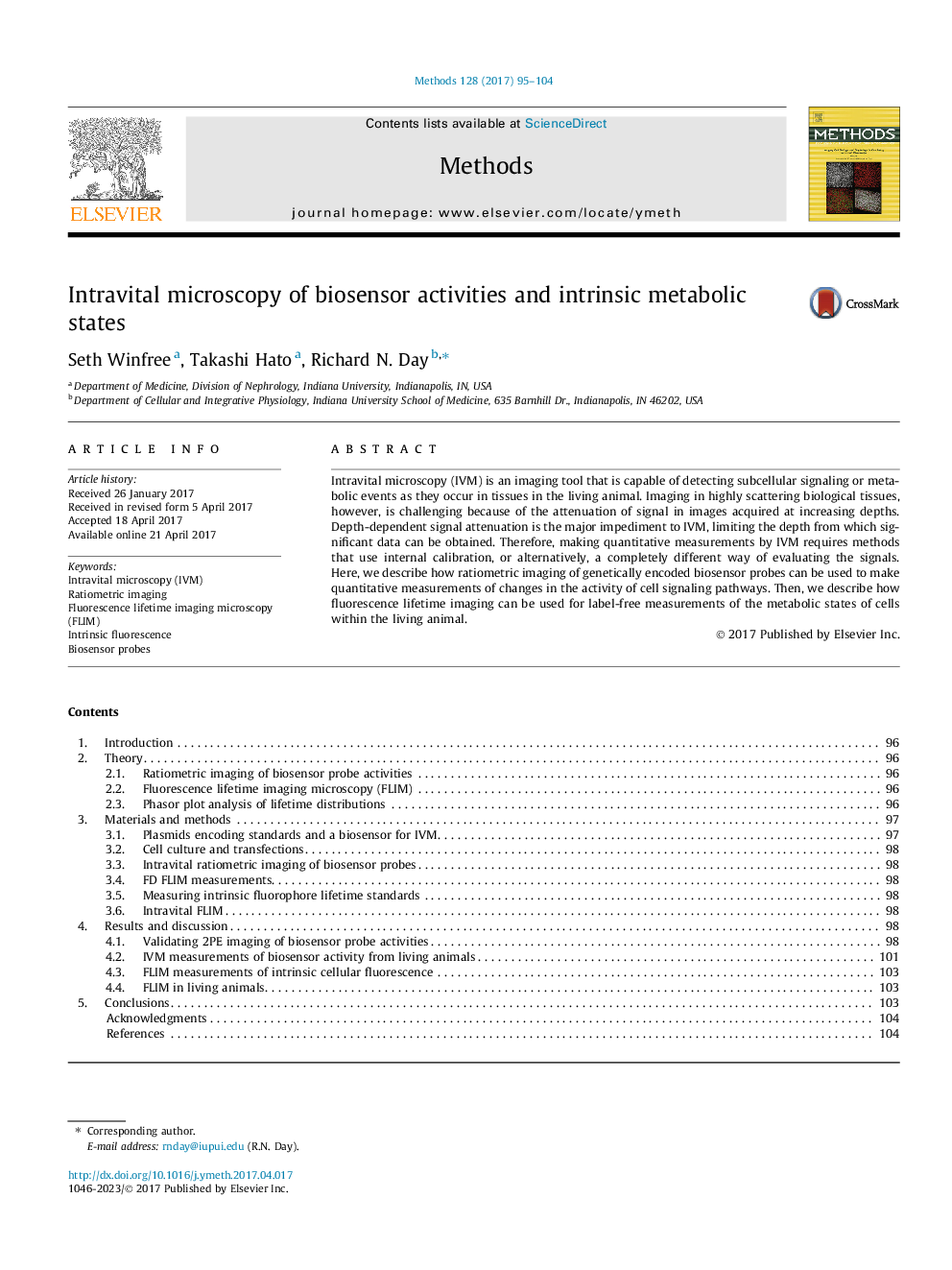| Article ID | Journal | Published Year | Pages | File Type |
|---|---|---|---|---|
| 5513356 | Methods | 2017 | 10 Pages |
â¢Intravital microscopy (IVM) is used to evaluate cell physiology in living animals.â¢Quantitative measurements by IVM requires internally standardized probes.â¢Ratiometric imaging of genetically encoded biosensor probes is described.â¢Label-free fluorescence lifetime measurements of metabolic events are described.
Intravital microscopy (IVM) is an imaging tool that is capable of detecting subcellular signaling or metabolic events as they occur in tissues in the living animal. Imaging in highly scattering biological tissues, however, is challenging because of the attenuation of signal in images acquired at increasing depths. Depth-dependent signal attenuation is the major impediment to IVM, limiting the depth from which significant data can be obtained. Therefore, making quantitative measurements by IVM requires methods that use internal calibration, or alternatively, a completely different way of evaluating the signals. Here, we describe how ratiometric imaging of genetically encoded biosensor probes can be used to make quantitative measurements of changes in the activity of cell signaling pathways. Then, we describe how fluorescence lifetime imaging can be used for label-free measurements of the metabolic states of cells within the living animal.
